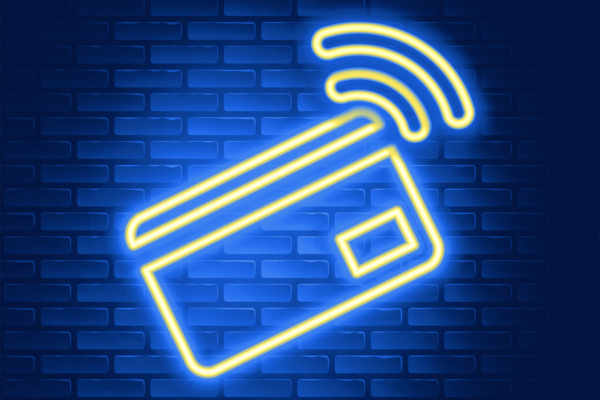
Take Control of Your Finances: Part One

Achieving financial control is not an instantaneous process. It requires patience, diligence, and some essential knowledge. Just like any worthwhile journey, establishing financial stability starts with a clear plan. By creating a financial roadmap, you’ll be better equipped to focus on your objectives and understand the steps needed to reach them.
In this series, we will outline crucial steps for reshaping your financial outlook. While this guide won’t eliminate financial challenges or erase debts overnight, it will arm you with the tools necessary to develop and execute a realistic plan. Our goal is to help you access the resources you need to attain financial security when you’re ready to embark on your journey. Today’s focus includes two dominant areas: formulating a financial plan and effectively managing debt.
Crafting Your Financial Plan
The first step in taming your finances is to build a robust financial plan, which can be broken down into four manageable components:
- Assess Your Current Financial Status.
- Develop a Budget.
- Establish Financial Goals.
- Implement a Savings Strategy.
The purpose of this series is not to drastically alter your lifestyle all at once or demand huge sacrifices. Instead, we aim to foster understanding, encourage small changes, and instill habits that will enhance your long-term financial stability. Let’s dive deeper into these four elements of a financial plan.
Step One: Assess Your Current Financial Status
The initial step in crafting your financial plan is to gain a clear understanding of your existing financial situation. We’re not budgeting yet; we simply need a broad overview of your finances.
Grab something to write with and start with these fundamentals:
- Identify your total income. Include all income sources, such as wages, dividends, interest, and child support.
- List down your fixed monthly expenses. This includes necessities like housing, food, transportation, and clothing.
- Document your discretionary spending. This encompasses entertainment, indulgences, and hobbies.
- Consider irregular expenses. Note down non-monthly costs such as holiday gifts and maintenance.
- Sum up your monthly expenses. Multiply that total by 12 to find your annual spending, then add any irregular costs.
- Review your numbers to ensure accuracy. The more comprehensive your list, the clearer your financial picture will be.
Step Two: Develop a Budget
With a solid understanding of your numbers, you can now create your budget. It’s essential to set limits or goals for each spending category.
Identify your spending categories for the year. Decide whether to simplify or detail your categories according to your preferences, such as combining groceries and dining out under “Food.”
- Examine your past spending across categories. Are there any areas where you overspent significantly?
- Evaluate spending in categories that concern you. Consider how you might reduce expenses in these areas.
- Set realistic limits for each category. Seek balance—if spending needs to increase in one area, think about cuts in another.
- Compare your income to your budget. Ensure your income covers all your planned expenditures; if not, adjust accordingly.
- Revise your budget until it works for you. This adjustment might take a few attempts.
- Incorporate budgeting into your regular routine. Allocate time weekly or monthly to review your spending.
These steps outline a fundamental approach to budgeting, but feel free to explore additional methods that suit you. The key is finding a system that resonates personally with you.
Step Three: Establish Financial Goals
Budgets can pave the way for achieving goals you may have thought were out of reach.
Start by drafting a list of the financial milestones you aspire to reach. You might find it helpful to categorize these as short-term and long-term goals.
Short-term objectives could include building an emergency fund or paying off credit card debt. For long-term goals, consider whether you want to purchase a home, save for a car, or set aside funds for your child’s college education.
After outlining your financial goals, prioritize them according to urgency and feasibility. It’s crucial to balance immediate needs with future aspirations to create a sustainable approach, which we will integrate into your budget in the next step.
Step Four: Implement a Savings Strategy
Once you’ve determined your financial goals, calculate the amount needed to achieve each one. Remember, you don’t need to set aside large sums every month; even small, consistent contributions can result in significant growth over time.
If you’ve established a solid emergency fund and reduced your debt, you might want to consider investing opportunities. More information on that will be available in our next blog post—stay tuned for Part Two.
Managing Debt
As you assess your budget and spending, you’ve likely noted existing loan and credit card obligations. Addressing debt is crucial for regaining financial control.
Regardless of whether it’s student loans, mortgages, or credit card balances, all forms of debt detract from your potential to achieve other financial goals. Here are steps to start tackling your debt:
- Determine the total amount of debt you owe.
- Make sure your budget accounts for the minimum payments to avoid late fees.
- Evaluate if you can allocate more funds toward debt repayment. Focus on high-interest debts first or consider attacking smaller balances for quicker wins. Stay consistent with your chosen strategy!
- Explore debt consolidation options if they can provide a lower interest rate.
If you’re juggling significant debt, consider making repayment one of your primary financial goals.
Striking a Balance Between Saving and Debt Repayment
It can be challenging to allocate funds for both saving and debt repayment. Many financial experts recommend prioritizing the establishment of an emergency fund as your first goal. This fund acts as a safety net, helping to prevent further debt accumulation in unforeseen situations.
Your emergency fund amount can vary; figure out a manageable number that can cover the most common emergencies, such as unexpected job loss or urgent repairs. Start small, then grow as you can.
Once you have your emergency fund in place, shift focus towards paying down debt. Some may find success by alternating between saving one month and tackling debt repayment the next, while others may prefer a balanced approach. Just ensure that your strategy doesn’t compromise your emergency savings.
Regain Control of Your Money
When you’re ready to begin pursuing your financial objectives, remember these foundational steps. They will provide guidance, whether you’re aiming to reduce debt, buy a home, or build month-to-month security. The path may not always be easy, but creating a financial plan will illuminate your route towards success.
In the next installment of Take Control of Your Finances, we’ll dive into credit cards, loans, and credit history. Stay tuned!
Looking for a new credit union?
Become a member today!




